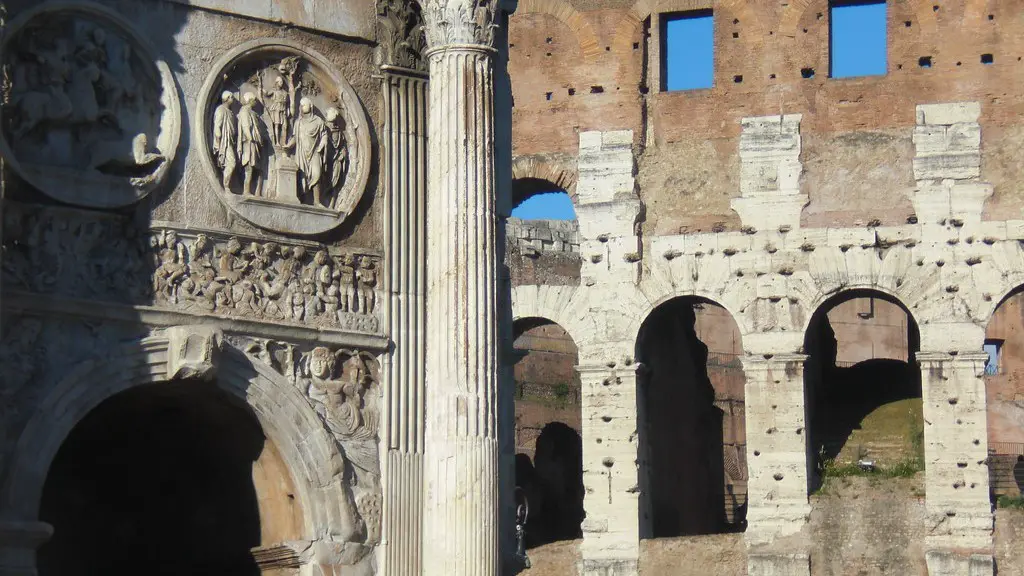What kinds of mines ancient Rome had?
Ancient Rome used to be one of the most powerful and influential empires of the ancient world. Unfortunately, the ancient Roman mine was not given much attention until recent times. This article will explore the various types of mines ancient Rome had, their purpose and the various resources they yielded.
At its peak, the Roman Empire held vast areas of land, stretching from the Mediterranean Sea to the River Danube in modern-day Europe. This enabled it to access an extensive range of resources, which included iron, zinc, lead and other minerals. Therefore it’s not surprising that many of the mines used by the Romans were located in some of the most remote areas of the empire.
In order to access the minerals, mineral-rich areas were excavated, often using underground tunnels and shafts to access the ore. The ore was then taken to a smelting site and processed into the raw minerals needed for various manufacturing processes. This process required significant resources and manpower as the ore was often taken from deep in the earth in extremely difficult to reach areas.
The extraction of these resources was done on an industrial scale, which required an organised system of administration and management. Two records, known as the Commentaarbia Memoriae and the Records of the Mines of Ancient Rome, have been discovered which indicate the complexity of the system of extraction, production and distribution of the various minerals.
The most significant and well known mines used by the Romans were located in Spain and Britain. Although there is evidence of mining taking place in many other locations, including North Africa, Asia Minor and Italy itself. The most commercially successful mines were located in Spain and Britain, with the majority of the mining takingplace between the Iberian Peninsula and the northwest of Britain.
To successfully extract the ore, the Romans adopted different mining techniques, which were particularly effective in different mining locations. One of the key techniques was ‘tunnel mining’, whereby an entry shaft was dug at an angle, allowing a long tunnel to be dug horizontally and then descended to the ore-bearing layer.
This would result in one or more tunnels being dug parallel to each other and then connected either by a vertical shaft to the surface or by a ‘room and pillar’ system. In this technique, pillars were left in place to support the roof and adjoining tunnels, allowing the mine to be slowly extended.
The purpose of these mines were twofold, with the most notable being to extract gold and silver, as well as other minerals such as lead, zinc, and iron. Gold was then taken to Rome to be used for coins and luxury items, whereas the extracted minerals were typically used to manufacture tools, weapons, building materials and furniture.
The operation of these mines was highly skilled and required a great deal of investment and manpower. Mining operations would require a significant workforce consisting of miners, engineers, smelters and craftsmen. In addition, many of the workers were slaves and prisoners.
As these mines provided an important source of income for the Roman Empire, they were strictly regulated by various laws. Following the defeat of Julius Caesar, the Lex de minaes, which specified the process of registering and leasing mines, was introduced in 44 BCE.
Significance of ancient Roman Mines
The significance of the ancient Roman mines is evidenced by their successful operation for over two centuries and their role in providing the resources necessary for the growth and power of the Roman Empire.
The resources provided by the Roman mines played an important role in the development of the empire. The most important of these were iron, lead and zinc, which were essential for the production of tools, weapons and other engineering works.
The mining industry was important for the Roman economy, as it was one of the main sources of revenue for the state. This allowed the Roman government to finance its armies, as well as its infrastructure and public works projects.
In addition to providing raw materials for the empire, the miners also played an important role in the domestication of wild animals. For example, the breeding and domestication of mules, which provided much needed transportation to the Roman Empire, is attributed to the miners.
Environmental Impact of Ancient Roman Mining
The ancient Romans may have had a vast amount of resources at their disposal, however, their mining activities had a significant environmental impact. Large-scale mining operations caused vegetation to be cleared and polluted the existing environment.
The environmental damage caused by the Romans is evidenced by the presence of large amounts of ore in the soil and groundwater. This is due to the workers being largely unregulated, resulting in irresponsible extraction and pollution of the ground.
In addition, mining operations also altered the structure of the land, as the construction of vast tunnels and shafts altered the natural landscape. This had a significant impact on the local vegetation, resulting in soil erosion and loss of vegetation cover.
Moreover, the use of underground water for cooling and transportation of minerals was also a major source of contamination, as the water used to cool the extraction engines was often contaminated with lead and other toxic chemicals.
Legacy of Ancient Roman Mines
The legacy of the Roman Empire is still present today, as some of the same mines are still in use in the modern day.
In particular, the Roman mines of Spain and Britain are still operational, providing many of the same minerals as well as new resources such as iron ore and coal.
The operation and expansion of many of these mines is largely attributed to the Roman Empire, as it was this period in which many of the techniques and systems of extraction were developed.
Today, many of the old Roman mines are preserved as tourist attractions, allowing visitors to experience the Roman way of life in these ancient locations.
Extent of Roman Mining
The extent of Roman mines was vast, stretching across the entire Empire and even beyond. One of the most impressive and far-reaching mines is located in what is now modern-day Jordan, where considerable amounts of copper, gold and other minerals are still being extracted.
In addition, the Romans mined extensively in North Africa and Asia Minor, where they extracted various minerals such as lead and zinc, which were used in the production of tools, weapons and other engineering works.
The Romans also mined in areas of modern-day Italy, such as the island of Sardinia, where gold and silver were extracted.
Overall, it appears that the Romans were quite successful in mining with operations existing at various locations all over the Empire, from which valuable resources were extracted.
Techniques Used In Ancient Roman Mining
The techniques used in mining during the Roman period varied depending on the type of ore being extracted and the location of the mine. Some of the most popular techniques included tunnel mining, room & pillar mining and ‘cage & support’ mining.
Tunnel mining involved the extraction of ore through a long tunnel dug into the ground and often extended laterally to reach deeper areas. This technique allowed for the extraction of larger quantities of ore in a shorter period of time.
Room and pillar mining involved the digging of a large room, leaving pillars in the ground in order to support the roof and adjoining tunnels. This technique enabled the miners to access deeper areas and to expand their operations.
The ‘cage and support’ technique was similar to the room and pillar method but required the use of a metal cage which was then filled with rock and other debris in order to support the roof. This method allowed for successful extraction of various minerals in difficult and differing terrains.
Overall, the Romans had a range of techniques which allowed them to access the resources they needed.
Conclusion of Ancient Roman Mining
The ancient Roman mines provided an important source of raw materials, which allowed the growth and power of the Roman Empire. The scale and sophistication of the operations and the technology used by the Romans enabled them to extract vast amounts of resources and minerals, forming an important component of the Roman economy.
Today, many of the old Roman mines still exist and are used to mine various minerals and raw materials. The legacy of the Roman Empire continues to be seen today in many of the techniques and processes used in modern-day mining.

